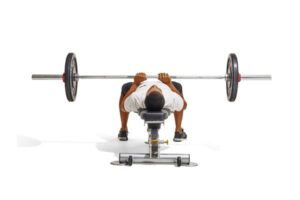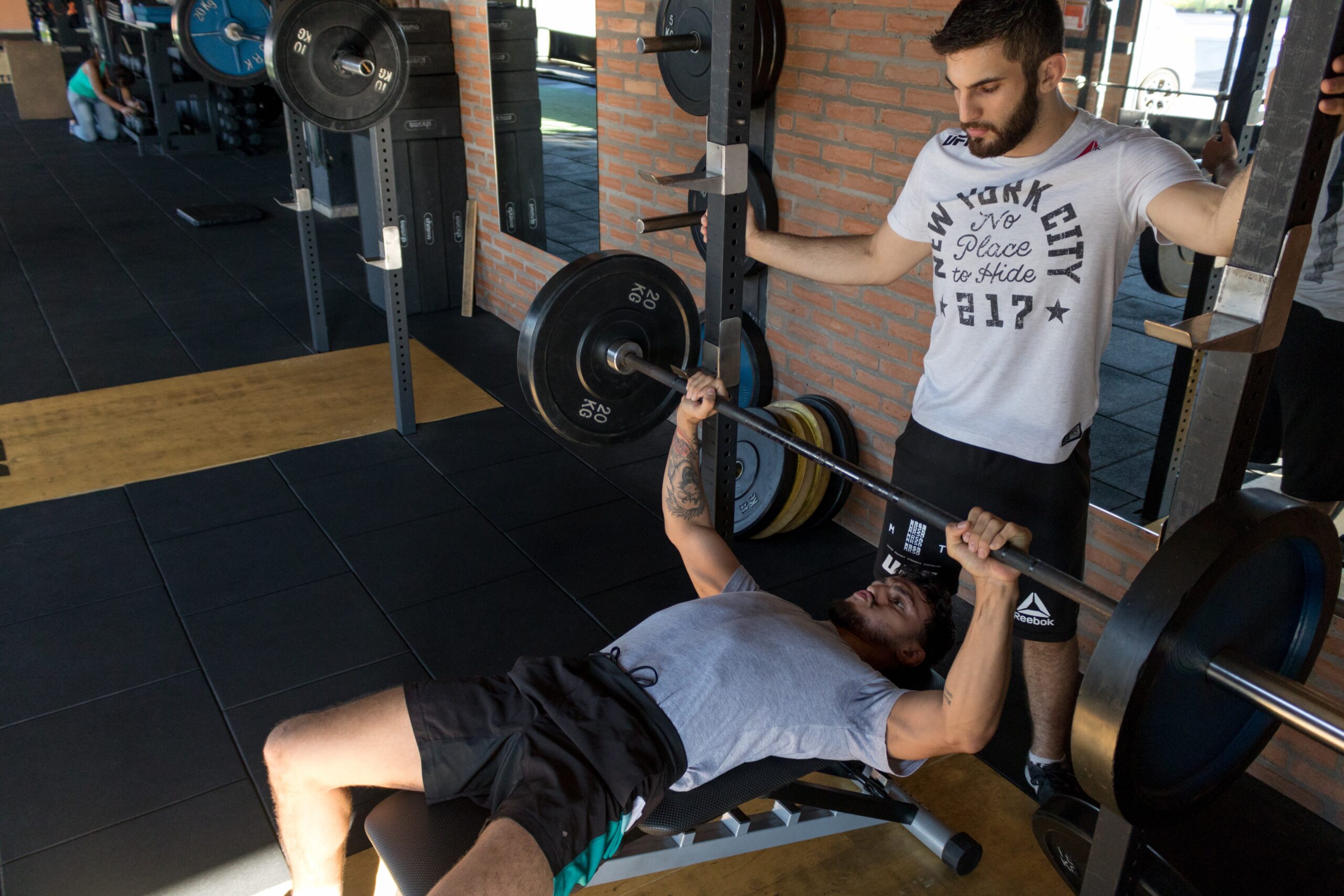The bench press is a classic chest builder exercise. It is imperative to perform this exercise with utmost precision. With a weighted bar over the chest, the chances of injury are heightened. The bench press is a very popular and common exercise, and hence can be found in almost every gym setting. Wherever you go, no matter how small or big the gym is, you will find the beach press apparatus for some fitness enthusiast to pump up their chest.
Bench press boosts up the muscles of three regions primarily & chest, from shoulders and triceps. Once you master this exercise you will see yourself gradually increasing the momentum, weight and trying different variations of the same. It is a very interesting exercise and has several variations to it. We will discuss all of these later.
When should one go for bench press?

Well, the timing is everything. When someone gets into the field of fitness and bodybuilding, they have to ensure that they do things at the right time. There is a particular time that body takes for each step. Any process, he is losing weight, gaining weight, or bodybuilding, each of these takes their time and there is a particular period that one has to surpass before stepping into a new routine. You should be affirmed that your chest and arms have the strength to lift the bar that you’re going to go underneath.
For a beginner, make sure that the empty bar is well within your limits to be pulled off. If not, you should maybe try some other muscle-building exercises that focus on your chest, shoulders, and arms. A professional empty barbell that’s used in the Olympics weighs exactly 20kgs. This weight may vary from place to place. Ensure that you are aware of it and have the strength to lift it.
A good way to get ready for the bench press is to start by doing a press up. For press up, you need to lie in a press-up position wherein your hands come underneath your shoulders, the core gets right, toes stick together and the body aligns in a straight line. Bend elbows to lower down the chest, now press powerfully to get to the beginning position. Try these at the basic level and get accustomed to the press-ups. Once you’re through with the press-ups and feel that you’re ready for a bench press, follow the steps that are lined up ahead.
How to do Bench Press?
To begin with, do a barbell bench press at the beginning to be sure of your capacities.
Step 1:

The most basic step of all is to comfortably lie down on the bench of the bench press apparatus.
Step 2:

Then comes the second step, here, make sure you follow all the instructions carefully. Make a grip on the barbell with your hands shoulder-width apart. Your elbows at this position should be just below your hands so that when lifting the barbell, elbows go up straight in the right position. A good posture is imperative to maintain for maximum strength generation.
Step 3:

Lift the barbell, bring it slowly towards your chest.
Step 4:

As you breathe out, push the barbell up with all your strength. Focus on the ceiling or some point above another than the barbell. This will ensure that the path of your movement remains the same every time you lift.
Since there’s weight involved in this exercise, there are high chances of injury. Your rotator cuffs can be easily torn out if the technique is not correct. Thus, be very careful of the things that could go wrong:
- Activation of lower spec muscles is bigger in a 30° to 45° inclined bench than in the flat bench press position.
- Other research shows that when performers were asked to do six repetitions of 65%, it was found that the muscle activation was greater at the flat bench.
Tips for beginners to follow:
- At all times while doing a bench press, your feet should be touching the ground. Press your feet hard on the ground while lifting the barbell. This will aid by giving you additional support, taking the weight off your arms and shoulders a little bit. Also, this way the tension is built in your hamstrings and glutes.
- The body, shoulders, head, and hip all should remain intact on the bench. The shoulders would retract firmly to the original position on the bench firmly every time you do the lift.
- While the barbell is overhead in arms are locked out, stick your eyes to the barbell.
- Hands should be as wide as shoulders.
- For racking and are racking the bar, use a spotter. If not available, stop before you fumble and fail. Listen to your intuitions and stop as you get uncomfortable. This will ensure safe racking and are racking of the bar.
- Unlocking the bar from the rack shall use a little extra strength. Give it that additional bit in the beginning.
- Do not go too heavy in the beginning. Period! One of the most common mistakes the bench pressers do is taking up weight way out of their league in light of copying other people. Understand that your body type and capabilities are different and you can grow them gradually and patiently.
- Set your shoulder blades, we’ll on the bench before you lift that weight up. Pull them back and down before you unrack the bar.
- Do not move your feet during the session. While you’re lifting a weight, your feet should touch the ground completely.
Now let us talk about variations of the bench press:
Incline bench press:

The bench here is inclined by certain degrees such as 15°, 30°, or 45° to build more tension and muscle activation. Incline bench press focuses on the upper body. Remember, incline benches press is difficult than the flat one and hence you can’t lift as much weight in the inclined variation as in flat one. Lie down, lift the barbell closer to the chest, then push it up and then down. Repeat the desired number of times.
Close grip bench press:

This one variation means that the bar is lifted with a much closer grip than the shoulder width. You decrease the distance of your grip on the barbell or dumbbell. This gives an additional boost to the triceps and whole arms in general. Lift the bar with your hands less than shoulder-width apart. Now, keep the elbows tuck by your sides. Pause for a few seconds, then press back to the beginning stance.
Dumbbell bench press:

Take the dumbbells with that you can handle. The focus here is to bring your hands by your side. Here the hands get more flexibility. Peck activation is the main target of the dumbbell bench press. Press the weights directly up straight. Let these wet over your chest, now lower back to the previous position.
Decline bench press:
As the name suggests, here the bench goes down a little. This one is indicated especially for focusing the lower chest muscle. The lower pectoral muscles are also targeted in the decline bench press.
Takeaway:
The bench press is a very popular exercise performed by various fitness fanatics and bodybuilders. It has tremendous action over the activation of various muscles. The bench press world record is set at 164 kgs. Certain things need to be taken care of while performing a bench press about any injury. Make sure you follow the steps and keep the right technique in mind.
See More:
Incredible Benefits of Squat Thrust
Best Shoulder Dumbbell Workout

